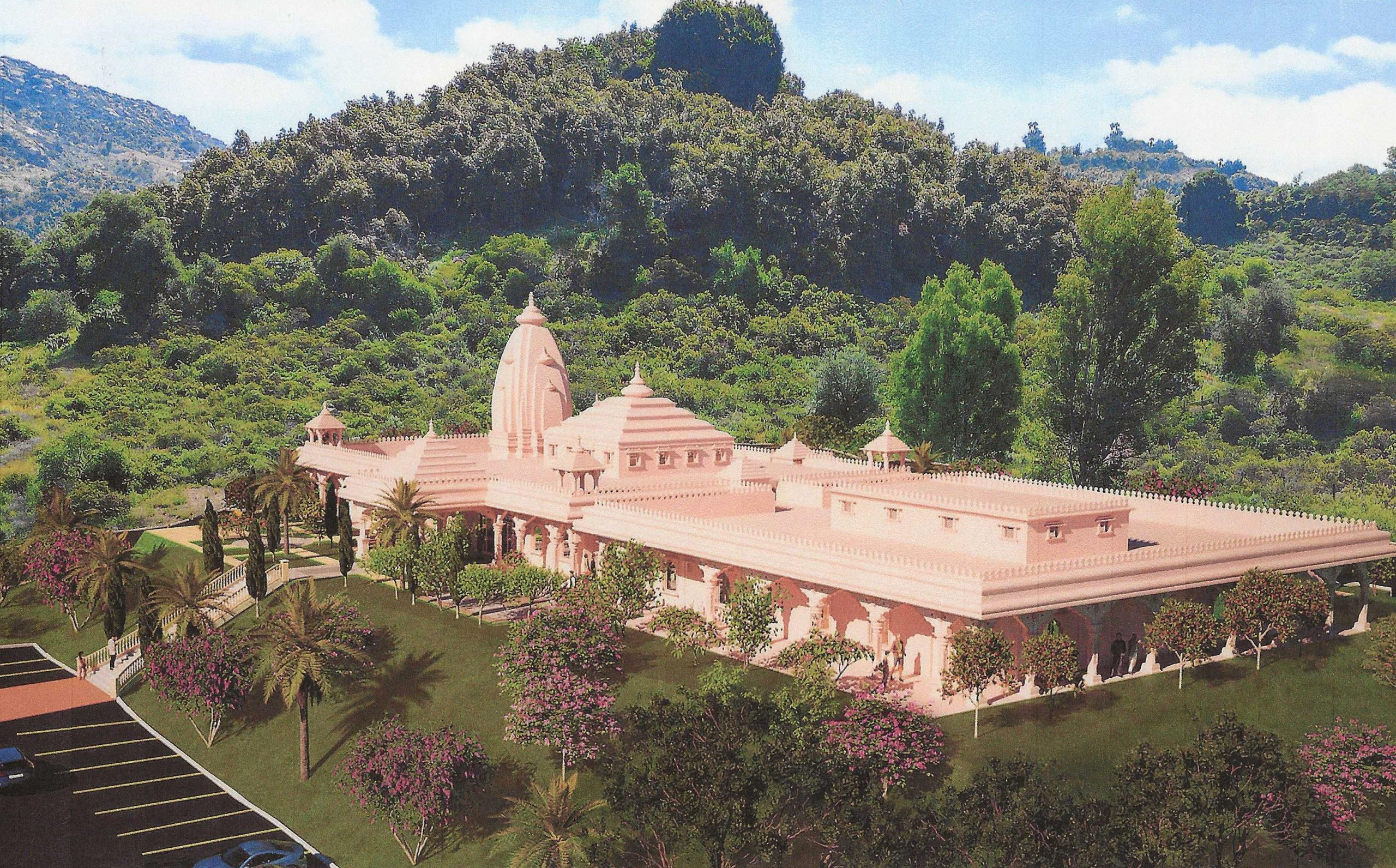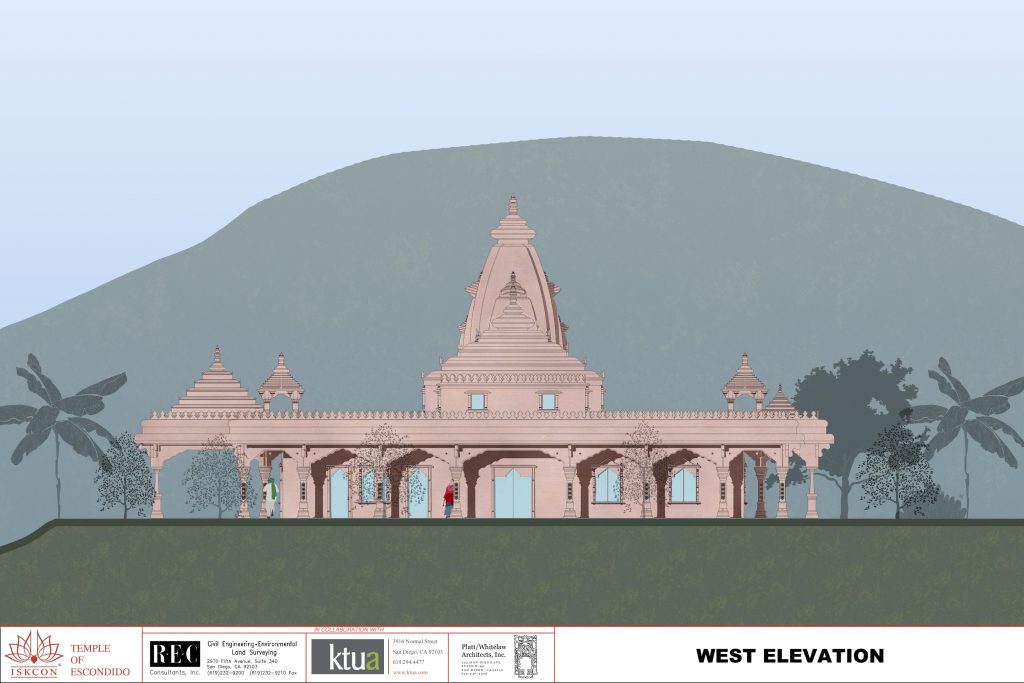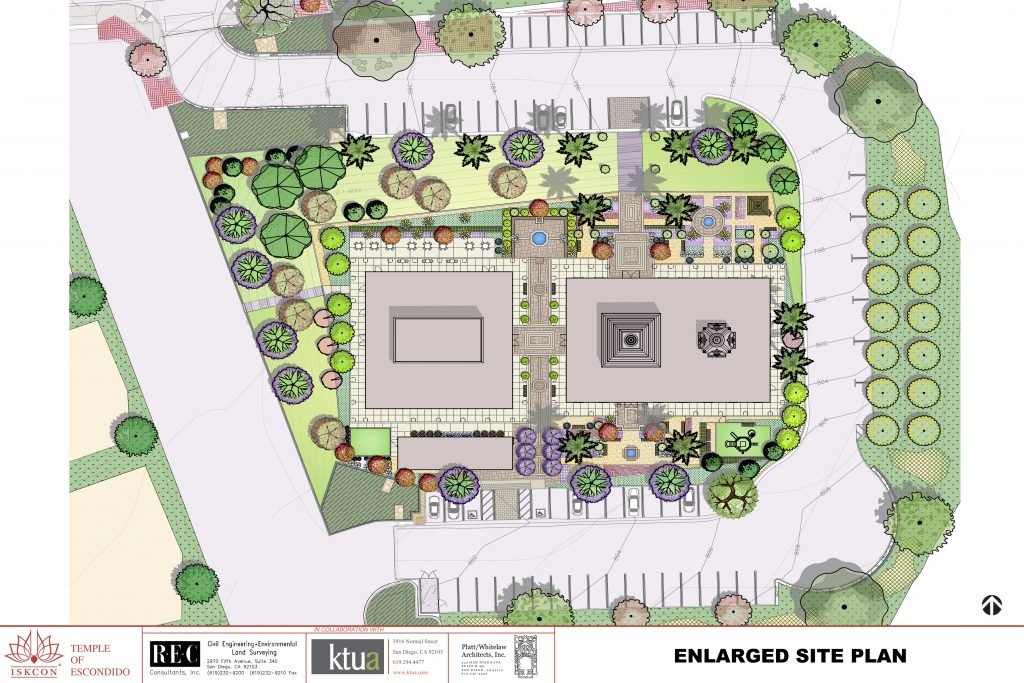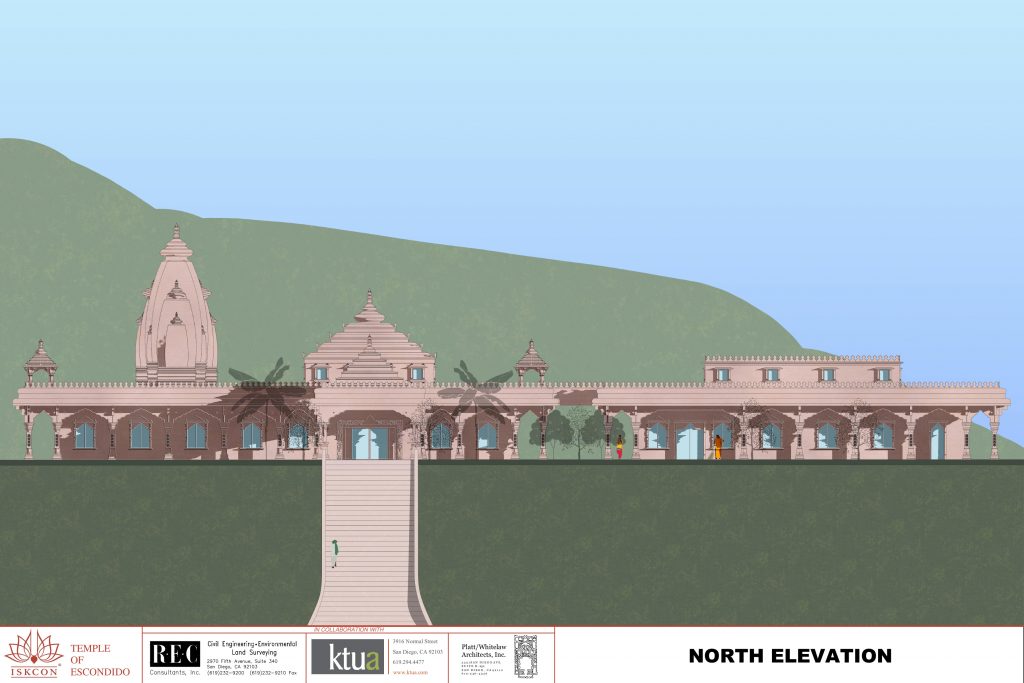Sacred Space & Vedic Architecture & Selection of the Escondido Site
The Origin and Principles
Until recent years, modern society has viewed much of the world’s ancient architecture and art as “simply decorative” or, in a general sense, as a tribute to the Divine. However, recent studies in the field of sacred architecture have uncovered hidden dimensions revealing a far-reaching connection between architecture and the creation of “sacred space”. The principle of sacred architecture advocates that basic architectural principles on the physical level are integral with structure’s impact and meaning on the metaphysical level.
Most sacred architectural traditions maintain that the ultimate reality exists beyond the mundane plane of temporary forms. As such, that higher reality, infinite in nature, can make itself known to the finite living entities, in the world here below. It does so through forms which, while seemingly limited and temporary, provide a bridge between the finite and the infinite. This is a shared experience across the spiritual traditions of the world. The archbishop of Canterbury, head of the Church of England, writes: “Anyone entering our chapel–no matter what their religion–will feel the sacred calling of the place and wish to sit in peace and silence.”
The knowledge of sacred architecture in India has existed since the Vedic* Age, some five thousand years ago. From the oral tradition it was later recorded in the Sanskrit mantras (succinct codes) and compiled under the title “Vastu Shastra.” The Vastu Shastra is possibly the oldest known architectural treatise in the world.
* “Vedic” means coming from the Vedas, India’s timeless books of wisdom. As we say “Biblical” meaning coming from the Bible or “Koranic” meaning coming from the Koran, “Vedic” means resting on the knowledge found in the Vedas.
Selecting the site for a Temple
Before the design of the temple building itself, it is necessary to select a suitable place where the temple should be built. The suitable choices are mentioned in the Vastu Shastra: “The best location to build a temple is at a tirtha (holy place).” The Vastu Shastra states: “A tirtha is a ford or crossing place from this world to the above–a point of marriage between transcendence and the mundane. A tirtha provides a crossing place for the upward journey of the soul.
If construction of the temple at a tirtha is not possible then another appropriate location can be found. The Vastu Shastra says: “A temple of the Supreme should be situated in a beautiful place where rivers flow, on the banks of a lake or by the seashore; on hill tops, mountain slopes, or in a hidden valley. The site of the temple may be selected in a forest, a grove, or in a beautiful garden.
Finding ISKCON’s Escondido Site
Years ago, ISKCON’s local leadership decided to move forward with plans to build a traditional Vedic / Hindu temple in Escondido. A senior monk was dispatched to the holy city of Tirupati in South India. Sitting on the top of a line of seven hills, this holy city is famous for its scholars highly trained in the art of temple architecture. The monk’s mission was to find out from them what kind of site we should be looking for. Their criteria were as follows: “The land should be high in the south, sloping down to the north, hills to the east, open to the west, a single road to the north, and with water flowing somewhere across the property. The whole parcel should not be “lion-shaped” (wide in the front and narrow in the back). Instead, the parcel should be “cow-shaped” (meaning narrower in the front than the back). “A lion-shaped site will devour (create so many problems) whereas a cow-shaped site will bring good fortune.”
Armed with this information, our monk spent two years and went through a string of real estate agents searching for the right type of site, without success. Having almost given up in frustration, one day he came across a parcel with a sign on it saying: “For Sale”. Stopping to check it out, he found that it met all the criteria given by the scholars in India. He e-mailed the topographical map to a friend in India who then drove it six hours to the holy city of Tirupati to consult the experts. Their answer was: “Site is most auspicious. Perfect for temple. Get it if at all possible”. This site is the land where the proposed temple will be built.
As a further confirmation, we learned later that an additional symptom of “auspiciousness” for a temple site is if there are fruit trees growing on it “spontaneously”. Our site had an orange tree, a lemon tree, a fig tree, a pomegranate tree, and a persimmon tree all growing “spontaneously” (meaning that the previous owner had no idea who had planted them there.).
- Sacred elements of a North Indian Vedic temple
The temple building is considered to be a figurative representation of the form of the Supreme Lord. There are two traditions, one known as “North Indian” and the other known as “South Indian”. The principles are the same. The difference is in the design of the details. The proposed temple in Escondido is designed according to the North Indian tradition. The following are the key elements of a Vedic temple designed according to the Vastu Shastra.
Sikhara
This is the temple spire. It has several meanings. It is considered to be the head of the form of the Supreme Lord. It also represents the mountain / pivot around which all the planets in the universe rotate according to Vedic cosmology. The height of the sikhara is determined in proportion to the size of the temple building. As there is the “golden mean” used in Western art and architecture since the Greeks, there are also mathematical formulas found in the Vastu Shastra for calculating the ratios and proportions for the various elements of a Vedic temple.
Chakra
This wheel-like design is placed on the top of the sikhara on all Vedic temples that are dedicated to the Supreme Lord. It has several meanings and purposes. It represents the wheel of “dharma”—eternal truth. It is the weapon of the Supreme that cuts down all evil and inauspiciousness. Its effulgence illuminates the path of the righteous. It is traditionally placed on the highest point of a temple so that it can be seen from a distance. Being able to see the chakra on top of the temple sikhara is considered to be a powerful means to receive the blessings of the Supreme Lord.
Flag
It is traditional to also place a flag on top of the temple sikhara. This flag is called the “jayapataka” or “flag of victory”. It is considered that those who see this flag receive the blessings of the Lord.
Vimana
This is the pyramidic structure on the roof of the temple building, situated over the main temple hall. As the shikhara is considered to be the head of the form of the Lord, the vimana is considered to be the representation of the face of the form of the Supreme. In Vedic tradition, it is said that at the time of death, a flower airplane takes pure-hearted souls to the eternal kingdom of God. The vimana also serves as a representation of such a flower airplane.
Griha Garba
This is the altar area. It is the “sancta sanctorum” or the holiest sacred space of a temple. It is used exclusively for worship activities and is accessed only by ordained monks and priests. It is also considered to represent the eyes and mouth of the form of the Supreme Lord.
Darshan Mandap
This is the main public assembly area. This is where the congregants, pilgrims, and visitors can observe and participate in worship services. It is also considered to represent the torso of the Supreme Lord’s form.
Note: All the above elements are inaugurated with the infusion of sacred mantras and prayers




